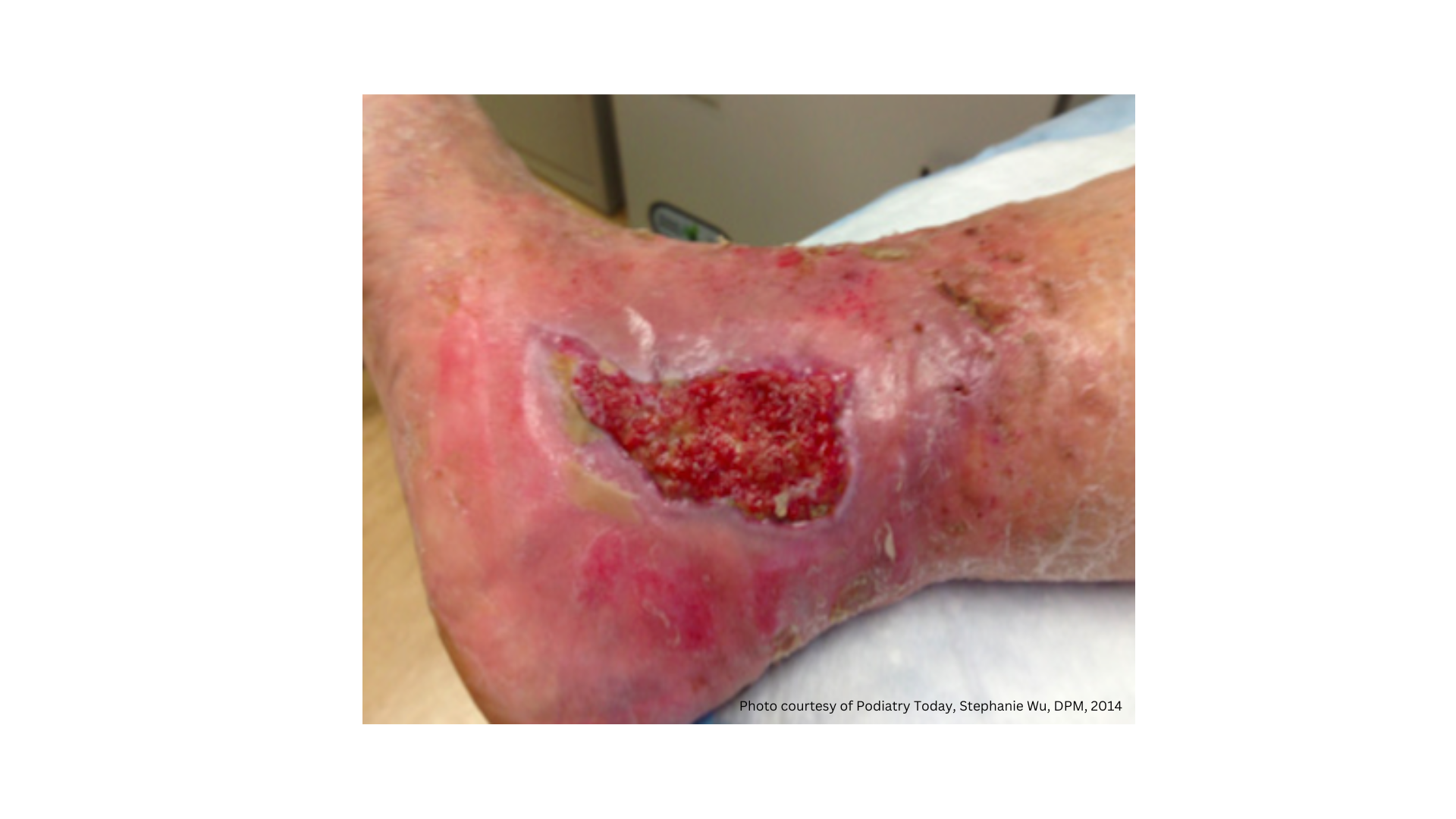Advanced Therapies for Diabetic Foot Ulcers
March 31, 2020
Advanced wound care technologies have come a long way in treating chronic wounds. However, diabetic foot ulcers (DFUs) can be challenging, and not every patient should have identical treatment. Utilizing a patient-centered approach is necessary for selecting appropriate treatments and achieving best possible outcomes. Understanding the specific patient’s needs and understanding the pathophysiology of diabetic wound chronicity are key elements in DFU management. The primary goal should be wound closure, while also preventing recurrence. To achieve both goals, clinicians must incorporate ongoing education and clinical support. Health care professionals should keep up on latest evidence-based research and practices to select the best advanced treatment for each patient.1
Diabetic Foot Ulcer Management
Before selecting an advanced therapy treatment for a patient, clinicians should first use standard of care treatments. In some cases, standard of care may be enough to encourage wound closure. If not, however, clinicians may be able to evaluate what areas of standard of care have failed to select the treatment that will best help the wound to achieve closure.
Wound Bed Preparation
Wound cleansing should be performed by using a non-cytotoxic solution. Topical antimicrobial and antibacterial agents lower the number of bacteria in chronic wounds and help to prevent infection and biofilm formation, which can impair healing.1 Utilizing one or more of the five methods of debridement is key in effective wound bed preparation. Debridement removes dead, damaged, or infected tissue to return chronic wounds to an acute stage and put them on a healing trajectory. Debridement methods include biologic, enzymatic, autolytic, mechanical, and surgical methods; they may be used alone or in combination with one another.
Offloading Methods
Offloading DFUs is critical in achieving closure. Patients with diabetic neuropathy have reduced pain responses. Reducing shear and pressure forces is critical in facilitating healing. Methods of offloading can consist of crutches, walkers, and wheelchairs. Therapeutic shoes, custom insoles, post-operative shoes, sandals, pad and protect dressings, removable cast boots (RCB), and total contact casts (TCC) are all treatment strategies available in offloading therapy.1,2
Advanced Therapies for Diabetic Foot Ulcer Management
After using standard of care treatments, health care professionals can then determine whether it is appropriate to use an advanced therapy. Treatment selections will vary based on the patient and the wound’s needs.
Growth Factors
Becaplermin 0.01% is the only Food and Drug Administration (FDA)–approved recombinant human platelet-derived growth factor (rh PDGF-BB) used in full-thickness lower extremity diabetic ulcers with adequate blood flow. This topical agent stimulates and supports the wound healing process. Clinical trial data validated that becaplermin helps reduce the risk of amputation, and one-third more DFUs healed in the active group with daily rh PDGF-BB versus the placebo control group at week 20.1 Becaplermin also has been shown to provide a 43% greater incidence of healing in neuropathic ulcers than placebo gel.
Collagen Products
There are many collagen dressings derived from a variety of sources, such as bovine, porcine, equine, and avian. Collagen-based dressings are available in particles, pads, gels, and paste forms depending on the manufacturer. DFUs are known to have a prolonged inflammatory response and extracellular matrix (ECM) irregularity. Collagen dressing technologies support and create a scaffolding matrix that regulates extracellular components, therefore moving chronic wounds toward closure.
Cellular and/or Tissue-Based Products
Cellular and acellular-based, placental/amniotic/chorionic–derived products are on the FDA-approved list for evidence-based treatment of DFUs. There is evidence suggesting decreased risk of amputation and increased wound closure when compared with generalized wound care standards.3 Tissue-based products or skin substitutes provide various skin cells such as fibroblasts and keratinocytes to promote tissue regeneration. These bioengineered products consisting of natural and or synthetic materials create an ECM for tissue growth.
Conclusion
DFUs can be a burden, complex and expensive for both the patient and the clinician. If DFUs are not prevented, identified early, well managed, and treated as appropriate, complications can lead to infection, amputation, and even death. Advanced wound care technologies should be utilized based on clinical findings, individualized care planning, and insurance. Continuous monitoring and reassessment in vascular status, offloading, compliance, and medical management are imperative in achieving DFU healing goals.4
References
1. Boulton AJM, Armstrong DG, Kirsner RS, et al. Diagnosis and Management of Diabetic Foot Complications. Arlington, VA: American Diabetes Association; 2018. https ://www.ncbi.nlm.nih.gov/books/NBK538977/ doi: 10.2337/db20182-1. Accessed March 16, 2020.
2. Werdin F, Tennenhaus M, Schaller HE, Rennekampff HO. Evidence-based management strategies for treatment of chronic wounds. Eplasty. 2009;9:e19.
3. Alavi A, Sibbald RN, Mayer D, et al. Diabetic foot ulcers: Part I. Pathophysiology and prevention. J Am Acad Dermatol. 2014;70:21e1-21e18.
4. Alavi A, Archibald G, Botros M, et al. Summary of an overview of advanced therapies in the management of diabetic neuropathic foot ulcers. Wound Care Canada. 2015;13(2):10-17.https://www.woundscanada.ca/docman/public/wound-care-canada-magazine/20…. Accessed March 16, 2020.
The views and opinions expressed in this content are solely those of the contributor, and do not represent the views of WoundSource, HMP Global, its affiliates, or subsidiary companies.











